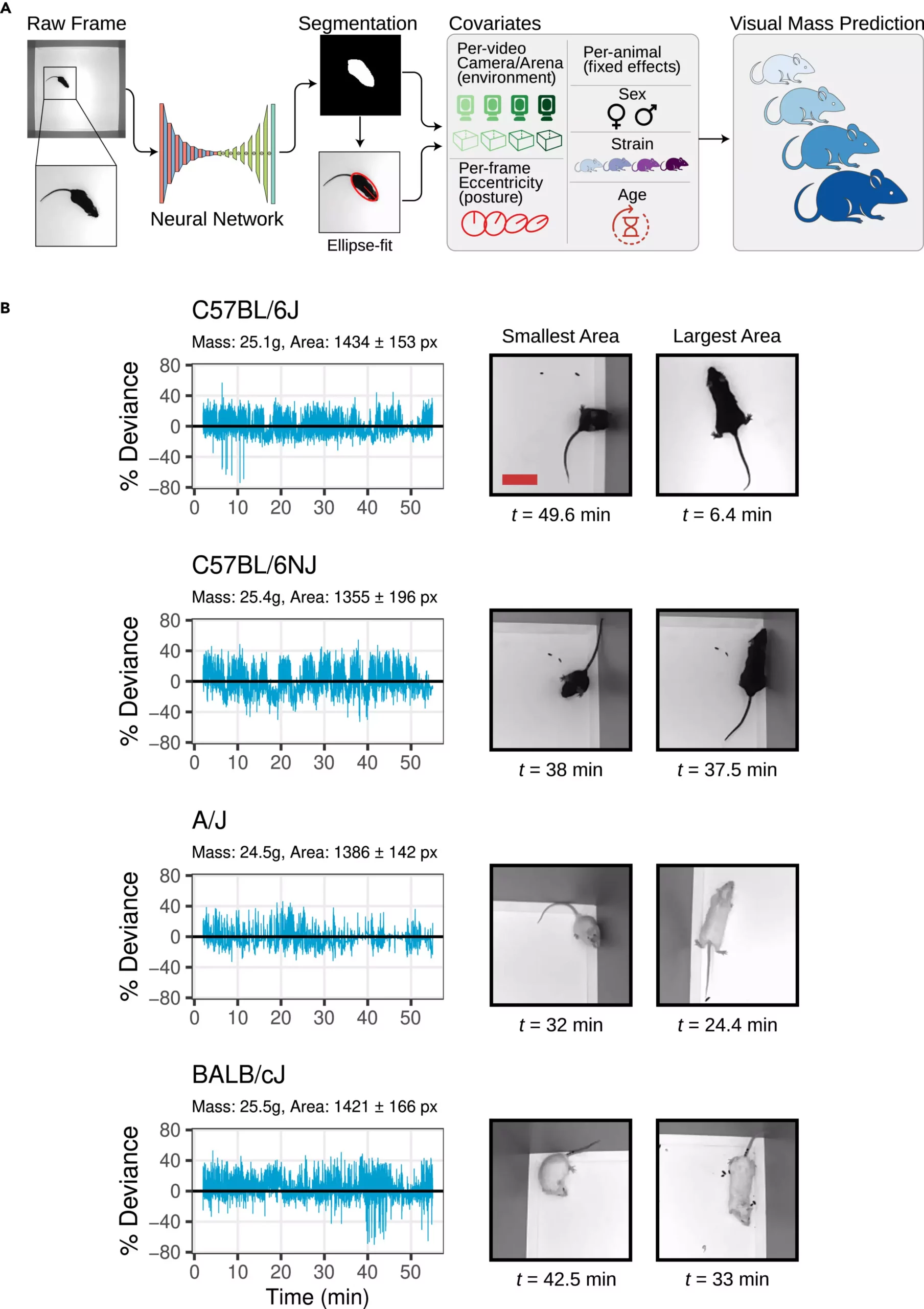A groundbreaking new method for accurately and continuously measuring mouse body mass without causing stress has been developed by a research team led by Jackson Laboratory (JAX) Associate Professor Vivek Kumar, Ph.D. Body mass is a critical metric in both human health and biomedical research, serving as an indicator of overall health and a predictor of potential health issues. Traditionally, measuring body mass in mice has involved removing them from their cages and placing them on a scale, which can be stressful for the animals and introduce variables that affect experimental results.
To address the limitations of traditional weighing techniques, Kumar and his team of computational scientists and software engineers turned to computer vision technology. By analyzing a large dataset of mouse videos, they were able to develop a method to calculate body mass with less than 5% error. This method offers a non-intrusive and stress-free way to measure body mass over time, improving the quality and reproducibility of preclinical studies involving mice.
Developing this new method presented several challenges for the research team. Unlike static subjects used in industrial farming, mice are highly active and flexible, making it difficult to accurately measure their body mass. Additionally, the team worked with 62 different mouse strains, each with unique sizes, behaviors, and coat colors, requiring the use of multiple visual metrics, machine learning tools, and statistical modeling to achieve accuracy.
The new method offers several key advantages for researchers. It enables the detection of small but significant changes in body mass over multiple days, which is crucial for studies involving drug or genetic manipulations. Additionally, the method has the potential to serve as a diagnostic tool for general health monitoring and can be adapted to different experimental environments and other organisms in the future.
The development of this non-intrusive method for measuring mouse body mass using computer vision technology represents a significant advancement in biomedical research. By eliminating the stress associated with traditional weighing techniques and providing more accurate and frequent measurements, this method promises to enhance the quality and reproducibility of preclinical studies. Researchers now have a valuable tool at their disposal to improve the validity of experimental results and further our understanding of health and disease.


Leave a Reply